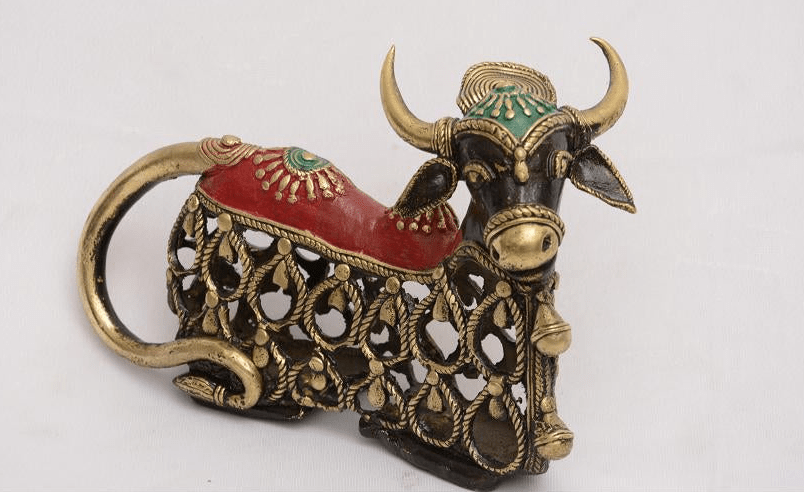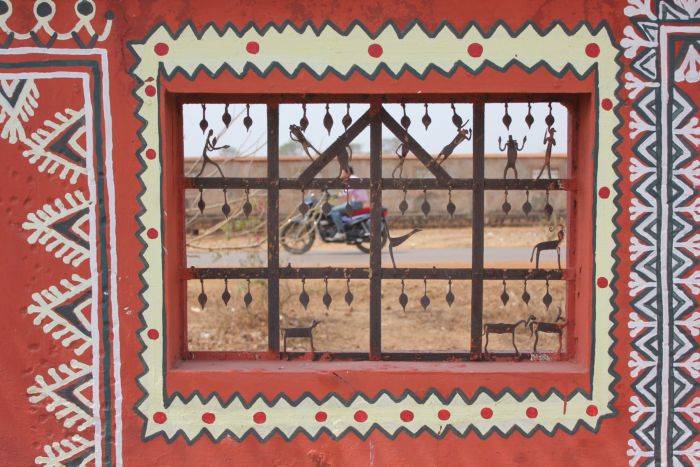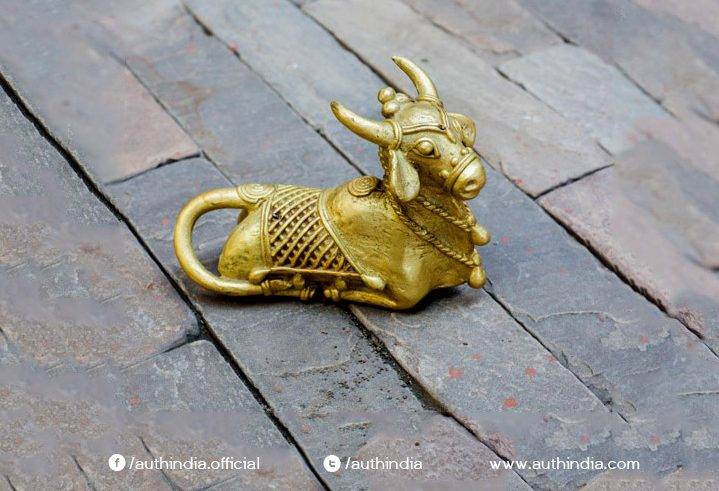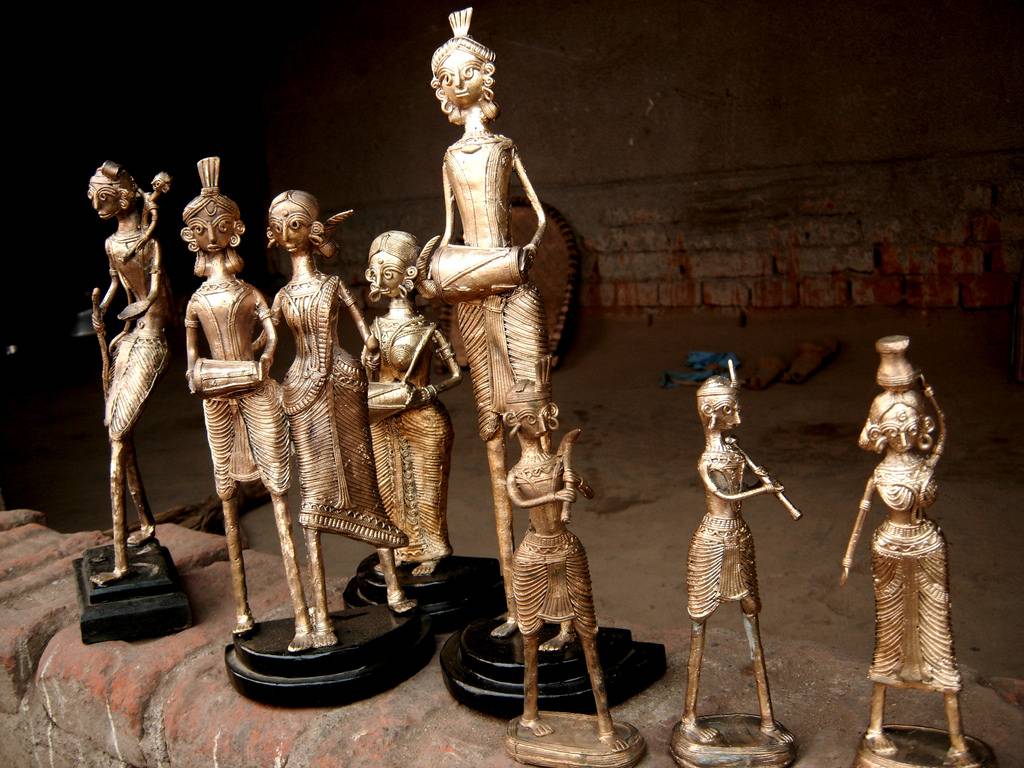Bastar Handicrafts

In the heart of India, amidst the verdant landscapes of Chhattisgarh, lies Bastar, a region pulsating with cultural heritage. Here, traditional craftsmanship isn’t merely an art form; it’s a testament to centuries-old legacies, resilience, and the artistic soul of its people. Bastar handicrafts, ranging from intricate bell metal artifacts to sustainable bamboo creations, are not just products; they are living chronicles of the region’s rich heritage, echoing the stories of generations.
Bastar’s handicrafts are a vibrant tapestry woven from a plethora of
materials: Bell Metal, Wood, Wrought Iron, Terracotta, Bamboo, Leather,
Bone, and Horn. Each craft encapsulates the essence of Bastar’s diverse
culture, breathing life into ancient traditions. These crafts are not
merely objects; they are the embodiment of artistic prowess, passed down
through generations, echoing the spirit of Bastar.

Bastar’s artisans, the unsung heroes of tradition, epitomize resilience, creativity, and the human spirit’s enduring power. In the folds of this vibrant region, their hands craft wonders, yet their journey is laden with challenges and triumphs that define the very essence of Bastar’s handicraft legacy.
Meet individuals like Shyamsundar Vishwakarma and Sharda Salam, artisans whose nimble fingers breathe life into wood and bamboo. Shyamsundar, an award-winning craftsman, intricately carves tales into wood, his artistry echoing the whispers of ancient trees. Sharda, a resilient artisan from Abujmad’s Bhutakhar village, masterfully creates bamboo wonders, each creation reflecting her dedication to preserving Bastar’s heritage. Their stories are not just narratives; they are sagas of passion, perseverance, and the unyielding determination to keep tradition alive.
However, their artistic odyssey is not without hurdles. Poverty knocks persistently at their doors, limiting their access to education, healthcare, and a better standard of living. Their craftsmanship, though extraordinary, often remains undervalued due to a lack of direct market access. Middlemen exploit their art, leaving them with a fraction of the actual worth of their creations. Yet, amidst these challenges, their hands continue to create, weaving dreams into every stroke, representing a profound commitment to their craft and their cultural heritage.

Intricacies of Bell Metal Artifacts: Masterpieces Carved in Timeless Craftsmanship
Bastar’s bell metal artifacts, revered worldwide for their exquisite beauty and cultural significance, stand as living testaments to the artisans’ unmatched skill and creativity. Each artifact is not merely a piece of metal; it’s a symphony of tradition, craftsmanship, and artistry, meticulously carved using ancient techniques that have withstood the sands of time.
Carving Techniques: Preserving Centuries-Old Wisdom: The process of crafting bell metal artifacts is a delicate dance of skill and precision. Traditional artisans in Bastar adhere to age-old techniques, passed down through generations. One such technique is the ‘Lost Wax Casting Method,’ an intricate process where a wax model of the desired artifact is encased in a mold. Molten bell metal is poured into this mold, replacing the wax and taking its shape. The mold is then broken, revealing the raw form of the artifact, which is meticulously refined.
This process demands not just technical expertise but also an intimate understanding of the metal’s behavior. The artisans’ hands, weathered by years of dedication, guide the tools with a finesse that only comes from years of practice. Every curve, every detail is a testament to their mastery, reflecting the wisdom of their forefathers and the dedication of their present.

Bell metal artifacts from Bastar don’t merely boast of skillful craftsmanship; they tell stories. The designs etched onto these artifacts are not arbitrary; they are symbols deeply rooted in the region’s folklore, mythology, and daily life. Intricate motifs of animals, gods, and nature are meticulously carved, each carrying profound symbolic meanings. For instance, the depiction of a tribal deity might symbolize protection, while an animal motif might represent harmony with nature.
Additionally, these artifacts often feature geometric patterns and tribal designs, reflecting the cultural ethos of the region. Every line, every curve is laden with meaning, making each artifact not just a visual delight but a narrative waiting to be deciphered. The blending of tradition with creativity results in designs that are not just aesthetically pleasing but also culturally rich, embodying the essence of Bastar’s heritage.
Preservation of Craftsmanship: Passing the Torch: Preserving these intricacies is not just a matter of artistic integrity; it’s a responsibility to the cultural heritage of Bastar. Artisans, aware of the significance of their craft, are engaging with younger generations to ensure the legacy continues. Apprenticeships, where the nuances of carving and designing are passed down, form the backbone of this preservation effort. Moreover, initiatives by the government and non-profit organizations provide platforms for these artisans to showcase their skills, nurturing a sense of pride and recognition.
Market Challenges and Exploitation: Struggles Under Shadows
In the bustling markets of Bastar, where vibrant crafts find their way into the hands of enthusiasts, a stark reality remains hidden beneath the surface – the exploitation faced by artisans at the hands of middlemen. This exploitation, intertwined with unfair pricing and a lack of immediate marketing channels, casts a long shadow over the lives and livelihoods of the very individuals who breathe life into these exquisite creations.
The Role of Middlemen: Exploitation and Unfair Pricing: Middlemen, often the intermediaries between artisans and markets, play a pivotal but often exploitative role. While they facilitate the sale of crafts, their pricing strategies frequently lean towards exploitation. Artisans, driven by passion and craftsmanship, find themselves at the mercy of these middlemen. These agents purchase the meticulously crafted artifacts at minimal costs and then inflate the prices significantly when selling them in bustling markets. This stark contrast between the meager amounts earned by artisans and the hefty profits pocketed by middlemen perpetuates a cycle of poverty and limited economic growth.

Lack of Immediate Marketing Channels: Hindrance to Artisans’ Prosperity: Adding to these challenges is the lack of immediate marketing channels. In an era dominated by global markets and digital commerce, artisans in Bastar often find themselves disconnected from potential buyers. The absence of platforms to showcase their crafts means limited exposure and reduced opportunities for financial growth. While the demand for authentic, handmade crafts exists globally, the lack of access to these markets hinders the artisans’ prosperity. The world, hungry for the rich cultural tapestry woven into these crafts, remains unaware of the hands that create them.
Seeking Light Amidst Shadows: However, amidst these challenges, there are glimmers of hope. Initiatives by non-governmental organizations (NGOs) and governmental interventions aim to bridge this gap. These organizations work towards establishing direct market connections, cutting through the exploitation cycle. Through skill development workshops and online platforms, artisans are finding new avenues to present their crafts directly to global consumers. Additionally, awareness campaigns highlighting the artisans’ stories and the significance of fair trade are shedding light on the exploitative practices, prompting consumers to seek ethically sourced crafts.

Future Prospects and Sustainability: Nurturing Traditions, Embracing Tomorrow
Amidst the tapestry of challenges, the future of Bastar’s handicrafts gleams with the promise of international recognition and sustainable practices. This resurgence is not merely about economic growth; it’s a celebration of cultural heritage, eco-conscious craftsmanship, and the preservation of ancient wisdom. The future of Bastar’s artisans is intertwined with international demand, sustainable practices, and the vital task of preserving traditional knowledge.
International Demand: Rising Interest in Bastar Handicrafts: In recent years, there has been a noticeable surge in global interest for authentic, handmade crafts. Bastar’s artisans, with their intricate bell metal artifacts, sustainable bamboo creations, and other crafts, are finding admirers across borders. International markets are opening their doors to these creations, recognizing the soulful artistry and cultural narratives they encapsulate. The intricate carvings and profound symbolism are not just aesthetic marvels; they are windows into an ancient civilization, capturing the imaginations of art enthusiasts worldwide. This rising demand not only bolsters the economic prospects of artisans but also fosters cross-cultural understanding and appreciation.
Sustainable Practices: Eco-friendly Aspects of Bastar Handicrafts: As the world embraces sustainable living, Bastar’s artisans stand as pioneers in eco-conscious craftsmanship. The materials they use, such as bamboo and other natural resources, are not only biodegradable but also renewable. The artisans adhere to age-old techniques that produce minimal environmental impact. Moreover, the emphasis on handmade creations promotes ethical consumerism, encouraging buyers to opt for products crafted with care rather than mass-produced items. Bastar’s handicrafts, inherently aligned with nature, exemplify the harmony between human creativity and environmental preservation, setting a benchmark for sustainable practices in the crafting industry.
Preserving Traditional Knowledge: Ensuring the Survival of Ancient Craftsmanship: At the heart of this resurgence is the critical task of preserving traditional knowledge. The ancient techniques, passed down through generations, hold the very essence of Bastar’s handicrafts. Initiatives to document, archive, and pass on this knowledge are underway, ensuring that the invaluable wisdom of the artisans is not lost to time. Apprenticeships, skill development programs, and community workshops are vital components of this preservation effort. By empowering the younger generation with the same techniques, these crafts find continuity, safeguarding a legacy that stretches back centuries.

